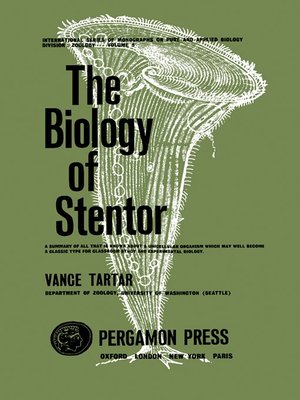The Biology of Stentor
ebook ∣ International Series of Monographs on Pure and Applied Biology: Zoology
By Vance Tartar

Sign up to save your library
With an OverDrive account, you can save your favorite libraries for at-a-glance information about availability. Find out more about OverDrive accounts.
Find this title in Libby, the library reading app by OverDrive.



Search for a digital library with this title
Title found at these libraries:
| Loading... |
The Biology of Stentor summarizes all that has been learned about the biology of a certain group of ciliate protozoa: the stentors. Topics covered range from form and function in Stentor to behavior, fine structure, growth and division, and reorganization. Regeneration is also discussed, along with polarity, metabolism, genetics, and primordium development. This volume is comprised of 20 chapters and begins with a characterization of Stentor, with emphasis on its particular advantages in addressing general problems of biology. The reader is then introduced to form and function in Stentor, particularly S. coeruleus. The following chapters focus on the behavior (food selection, swimming, response to light, etc.) of stentors and the fine points of structure in terms of which this behavior is to be explained and which demonstrate the highly complex and precise achievements of morphogenesis. The remaining chapters explore growth and division in Stentor as well as the course of reorganization and regeneration; development of the oral primordium and how it is activated and inhibited; rate of regeneration in relation to the polar axis; fusion masses of whole stentors; and reconstitution in disarranged stentors. Various species of Stentor are also described, together with the techniques used to study them. The final chapter deals with hypotheses concerning the morphogenesis of ciliates. This book will be of interest to students and practitioners of biology and physiology.






